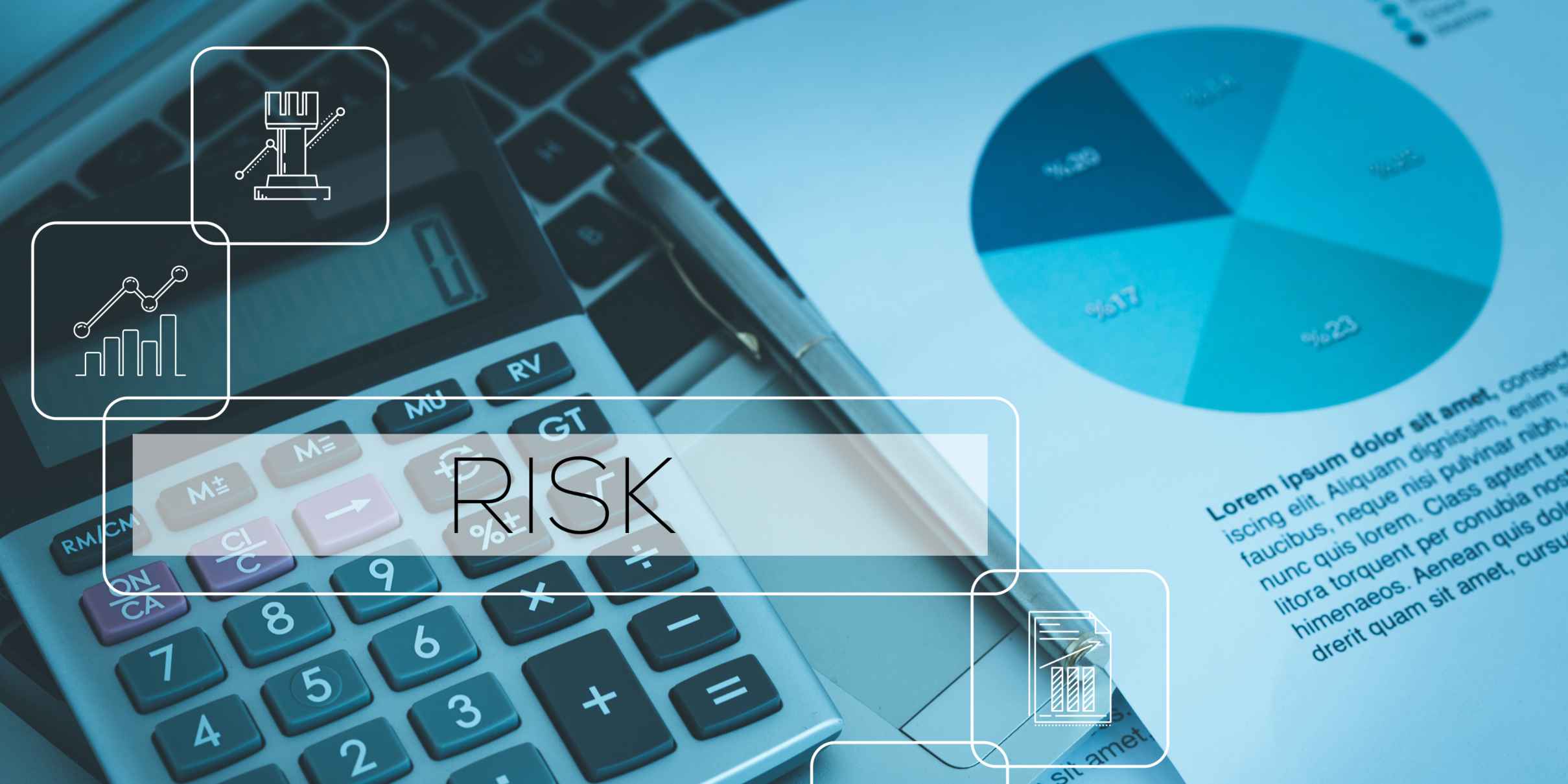Introduction: Why risk management has become a business imperative
In today’s complex and volatile world, risk is no longer confined to annual reports or compliance checklists. From cyberattacks and supply chain disruptions to regulatory pressure and AI risks, organizations are constantly navigating uncertainty.
Risk management, when done right, is not a barrier to innovation—it’s an enabler of confident decision-making. It shifts the mindset from firefighting to foresight, transforming how leaders plan, prioritize, and perform.
What is risk management, really?
Risk management is a structured process to identify, assess, control, and monitor uncertainties that may impact an organization's ability to achieve its objectives.
It’s not just about minimizing threats—it’s about understanding your risk appetite, making informed choices, and embedding control thinking into everyday operations.
The Risk and Control Cycle (CERRIX Model)
Here’s how structured risk management unfolds across 11 clear steps:
- Define the objective and scope of the risk assessment
Establish the business objective or process to be assessed, ensuring clarity and alignment with organizational priorities. - Identify the related risks
Identify events, conditions, or uncertainties that could impact the objective—based on incidents, audits, expert input, or data trends. - Determine target risk score based on risk appetite
Define the acceptable level of risk using the organization’s risk appetite and tolerance thresholds. - Determine gross risk score (without taking controls into account)
Assess the inherent risk by evaluating its likelihood and impact without considering existing controls. - Set control objectives and identify current controls
Document control objectives for each risk and map existing controls in place to mitigate it. - Determine net risk score (taking existing controls into account)
Recalculate the risk level after factoring in the effectiveness of current controls. - Determine risk response based on risk appetite / target score and optionally set up improvement actions when the risk is outside the risk appetite / target score
Compare the net risk score to the target. If it exceeds the acceptable level, define additional mitigation or improvement actions. - Test controls
Evaluate whether controls are designed appropriately and function effectively over time:
– Initially: test of design
– Repeatedly: test of effectiveness - Determine actual risk score after performing tests
Finalize the risk rating by integrating control test results and reassessing the risk. - If a test fails, set up and follow up on remediation actions for the control
Define corrective actions, assign ownership, and monitor follow-up if control tests reveal deficiencies. - Report on the status of risks in control
Communicate the current risk posture, control performance, and improvement progress to stakeholders.
.png)
Why risk management is more strategic than ever?
Modern risks are no longer siloed. A data breach can cause operational downtime, legal liabilities, and reputational damage all at once. This interconnectedness requires a shift from periodic assessments to ongoing enterprise-wide risk management (ERM).
Strategic benefits include:
- Aligning risks with goals and appetite
- Enabling real-time visibility and reporting
- Empowering the first line of defense
- Supporting regulatory and audit readiness
Organizations are increasingly integrating risk awareness into daily decisions—from finance to IT and HR.
The anatomy of a risk management process
While frameworks vary, most effective programs follow a lifecycle model:
1. Risk identification
This begins by uncovering potential threats or vulnerabilities across departments. Methods include interviews, audit reports, incident reviews, or even AI-based scanning.
2. Risk assessment
Here, each risk is analyzed in terms of likelihood and impact—usually scored using defined scales (e.g., 1–5) and often visualized through risk matrices.
3. Risk prioritization
Not all risks are equal. Prioritization enables teams to focus resources on the most urgent and damaging threats.
4. Risk response planning
Options include mitigating the risk (through controls), transferring it (via insurance), avoiding it (changing course), or accepting it (monitoring without action).
5. Monitoring and review
Risks evolve. So must your response. Periodic reviews ensure the risk register reflects current realities, not past assumptions.
Risk management frameworks: ISO, COSO, and Beyond
Different industries and regions lean on different risk governance models:
- ISO 31000: A global standard emphasizing strategic integration and leadership accountability.
- COSO ERM: Popular in financial services; it emphasizes control systems, objective setting, and board-level alignment.
- NIST RMF: U.S.-centric and security-focused, ideal for digital infrastructure and government-related systems.
- 3 Lines Model – Distinguishes roles: business owners (1st), oversight functions (2nd), and assurance (3rd).
The best frameworks are not adopted wholesale—but tailored to fit organizational maturity and goals. See all frameworks available in CERRIX.
What are the types of risks that matter most?
Risks come in many forms, and leaders must look beyond the obvious. Here’s a strategic breakdown:
- Strategic Risks: Decisions that fail to deliver value (e.g., entering a new market too soon)
- Operational Risks: Disruptions to daily activities (e.g., equipment failure)
- Compliance Risks: Violations of laws or regulations (e.g., non-GDPR-compliant data practices)
- Financial Risks: Exposure to credit, market, or liquidity fluctuations
- Reputational Risks: Negative public perception, often resulting from other risks
- Cybersecurity Risks: The rising threat from digital breaches, phishing, and ransomware
From Theory to Action: Tools That Make It Work
Manual spreadsheets and siloed assessments no longer cut it. Leading organizations rely on platforms that centralize and automate the risk lifecycle.
What to Look for in Risk Management Software:
- Customizable risk scoring models
- Integrated risk-control mapping
- Dashboard-level reporting for executives
- Issue and audit management linkage
- Automated alerts for high-priority risks

CERRIX: Streamlined, integrated risk management for Europe and beyond
CERRIX is a modern GRC platform designed to help organizations embed risk management into their operations, not bolt it on after the fact.
Built with European compliance and usability in mind, CERRIX offers:
- Risk register and assessment workflows
- Real-time dashboards and reporting
- Control libraries aligned with frameworks like ISO 31000, ECB guidelines, and GDPR
- Integrated audit and incident modules
- Notification systems for overdue risks or control failures
It’s particularly well-suited for mid- to large-sized organizations navigating both operational complexity and regulatory scrutiny.
A strategic use case
Haier Europe, part of Haier Smart Home—the world’s leading home appliance manufacturer—operates in over 45 markets across EMEA, with its headquarters in Vimercate, Italy. The company manages a portfolio of well-known brands including Candy, Hoover, and Haier, and employs more than 10,000 people in the region. Haier faced the challenge of ensuring transparency, regulatory compliance, and risk oversight across its regional and international operations—making the role of internal audit more essential than ever.
After adopting CERRIX, they:
- Reduced manual reporting time drastically
- Achieved full audit traceability of risk evaluations
- Connected risks to strategic KPIs and compliance obligations
- Gained real-time visibility into emerging threats through interactive dashboards
What started as a risk initiative quickly became a performance advantage.
FAQs
Q1: Do I need a formal risk management function?
Yes—especially as your organization grows. Without it, risk is managed informally, inconsistently, and reactively.
Q2: How often should we reassess risks?
At least quarterly, and after any significant change (new market, system, regulation, or incident).
Q3: Can small businesses benefit?
Absolutely. Risk management scales. Even basic registers and owner assignments can drastically improve visibility and control.
Q4: How do I know our program is working?
Look for reduced losses, fewer surprises, faster response times, and higher confidence in decisions. Internal audits can validate maturity.
Conclusion: From uncertainty to confidence
Risk is not something to be feared—it’s something to be understood, assessed, and managed. When risk becomes part of every key decision, your organization doesn’t just survive uncertainty. It thrives in it.
And with platforms like CERRIX, embedding that mindset into daily operations is no longer a challenge—it’s a competitive edge.
Spreadsheets vs. GRC Tools: Elevating Risk & Compliance Management
Accessible popup
Welcome to Finsweet's accessible modal component for Webflow Libraries. This modal uses custom code to open and close. It is accessible through custom attributes and custom JavaScript added in the embed block of the component. If you're interested in how this is built, check out the Attributes documentation page for this modal component.


.jpg)
%20(1).jpg)
.jpg)
.jpg)
.jpg)
.jpg)
%20(1).jpg)
.jpg)
%20(1).jpg)
.jpg)
.jpg)

.jpg)
.jpg)




.jpg)

%20(2).jpg)
















%20(1)%20(2).jpg)





.jpg)

.png)
.jpg)






%20(1).avif)



